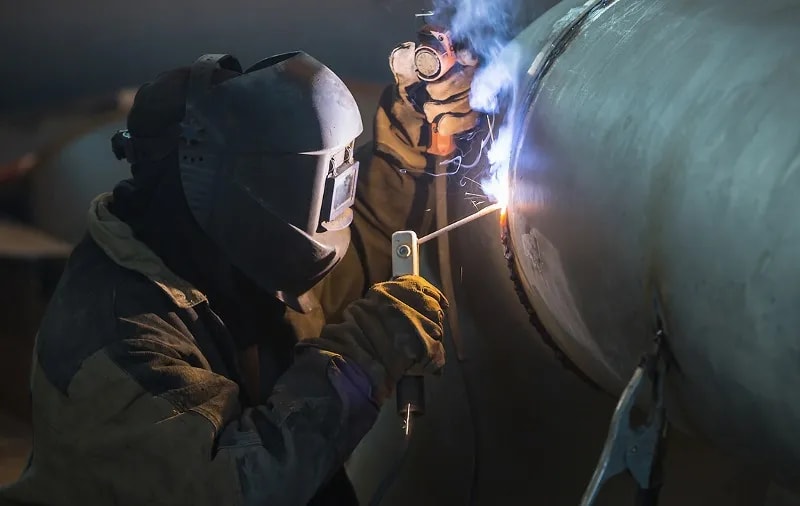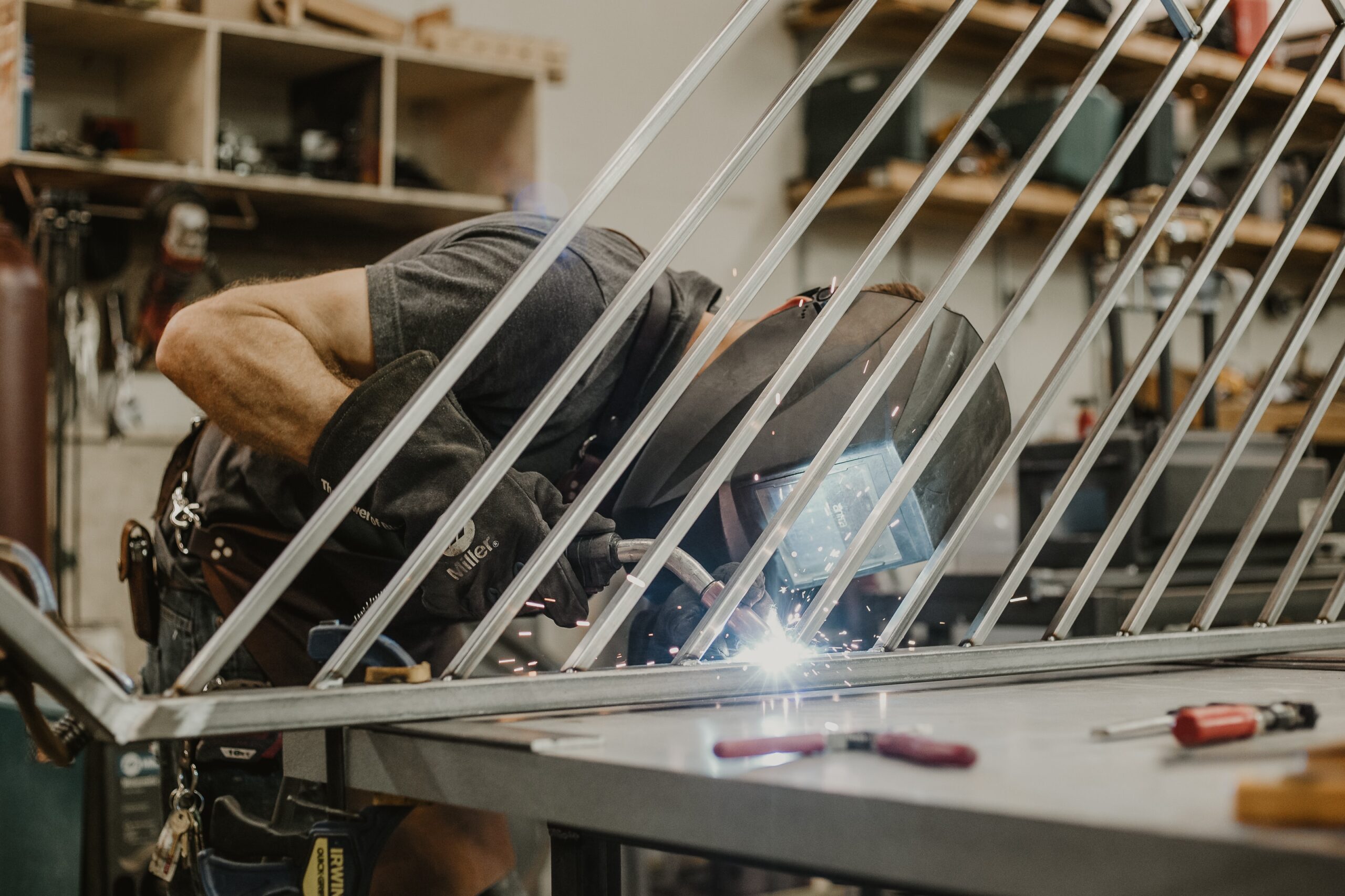Common Welding Fixing Issues and How to Address Them Efficiently
Welding repair work typically encounter a range of concerns that can jeopardize the stability of the end product. Usual troubles include inadequate infiltration, porosity, and imbalance, to name a few. Each problem presents one-of-a-kind challenges that require certain approaches for resolution. Recognizing these issues is necessary for welders intending to improve their skills and results. This conversation will certainly check out these typical welding repair service issues and effective techniques to resolve them.
Inadequate Penetration
Poor infiltration occurs when the weld steel falls short to fully fuse with the base product, leading to weak joints and potential structural failings. This issue commonly originates from not enough warmth input, incorrect electrode angle, or incorrect welding speed. Welders may come across insufficient penetration as a result of a miscalculation of the needed parameters for a details product thickness or kind. Additionally, contamination on the base product's surface area can impede efficient bonding, aggravating the issue. To resolve insufficient penetration, welders must ensure suitable settings on their devices and maintain a clean job surface area. Normal assessment of welds is advised to determine any type of deficiencies early, permitting timely modifications and the prevention of jeopardized architectural honesty in welded settings up.
Porosity
Porosity is a typical flaw in bonded joints that materializes as small gas bubbles entraped within the weld metal. This flaw can jeopardize the honesty of the weld, resulting in minimized toughness and potential failing under stress. Montana Mobile Welding and Repair Belgrade. Porosity typically arises from contamination, moisture, or improper welding techniques, which enable gases to run away right into the liquified weld swimming pool. To attend to porosity, welders must guarantee correct surface prep work, maintain a tidy working environment, and make use of suitable welding specifications. In addition, selecting the best filler product and securing gas can minimize gas entrapment. Regular evaluation and screening of welds can assist recognize porosity early, ensuring timely rehabilitative actions are taken, thereby preserving the high quality and dependability of the welded structure
Imbalance
Misalignment in welding can develop from numerous elements, including incorrect arrangement and thermal development. Understanding the source is vital for effective resolution. Numerous improvement strategies are readily available to realign parts and assure structural honesty.
Sources of Imbalance
Welding misalignment usually comes from a variety of underlying issues that can compromise structural integrity. One main cause is inappropriate fit-up of components before welding, which can bring about gaps and irregular surface areas. Variants in thermal development during the welding procedure can likewise result in distortion, especially if the materials being joined have different coefficients of expansion. Furthermore, poor clamping and fixturing might fall short to hold parts firmly in place, resulting in movement during welding. Improperly maintained equipment, consisting of welding equipments and devices, may introduce incongruities in the weld bead, additional adding to misalignment. Finally, operator mistake, originating from insufficient training or experience, can additionally play a significant role in developing misaligned welds.
Improvement Methods Offered
Resolving misalignment properly calls for a mix of corrective techniques tailored to the particular issues handy. One usual method is using jigs or fixtures to hold parts in the appropriate position throughout welding, ensuring constant placement. Additionally, preheating the materials can help minimize distortion and boost fit-up. For substantial imbalance, mechanical realignment methods, such as using hydraulic jacks or clamps, can be utilized to fix the setting prior to welding. Post-weld heat therapy may likewise be necessary to eliminate anxieties triggered by misalignment. Ultimately, cautious inspection and modification throughout the setup stage can protect against misalignment concerns from ending up being considerable troubles, advertising a smoother welding procedure and enhancing overall architectural stability.
Distortion
Distortion is an usual obstacle in welding that can arise from various variables, including irregular cooling and heating. Understanding the reasons for distortion is essential for executing efficient avoidance methods. Addressing this issue not only boosts structural honesty but additionally boosts the total high quality of the weld.
Causes of Distortion
When based on the extreme warmth of welding, materials typically undergo modifications that can bring about distortion. This sensation mostly occurs from thermal growth and tightening throughout the welding process. As the weld location warms up, the product increases; upon cooling, it gets, which can develop interior stresses. On top of that, unequal heating across a work surface can intensify these stress and anxieties, causing warping or flexing. The kind of product also plays a substantial duty; steels with differing thermal conductivity and coefficients of expansion may respond in different ways, bring about uncertain distortions. Furthermore, inadequate joint style and insufficient fixturing can contribute to imbalance during welding, boosting the likelihood of distortion. Understanding these reasons is crucial for effective welding fixing and prevention approaches.
Prevention Techniques
Effective avoidance techniques for distortion during welding concentrate on regulating heat input and making certain appropriate joint style. Preserving a regular warmth input aids to reduce thermal development and contraction, which can lead to distortion. Utilizing strategies such as preheating the workpiece can likewise lower the temperature slope, advertising consistent heating. Furthermore, picking ideal joint styles, such as T-joints or lap joints, can improve security and minimize anxiety concentrations. Applying proper fixturing to protect the workpieces in area even more aids in keeping placement throughout the welding procedure. Finally, staggered welding sequences can distribute warm extra uniformly, stopping localized distortion. By applying these strategies, welders can greatly decrease the likelihood of distortion and improve the general top quality of their welds.
Fracturing
Fracturing is a common concern come across in welding repair services, usually resulting from different aspects such as inappropriate air conditioning prices, material choice, click site or poor joint prep work. The incident of fractures can greatly jeopardize the honesty of the weld, resulting in potential failings throughout operation. To address this concern, welders have to first analyze the origin, ensuring that materials are compatible and properly selected for the specific application. In addition, managing the air conditioning price throughout the welding procedure is crucial; fast air conditioning can induce anxiety and result in breaking. Correct joint style and preparation likewise add to lessening the threat. Implementing these strategies can boost weld quality and resilience, ultimately minimizing the read review likelihood of breaking in completed weldments.

Insufficient Fusion
A considerable problem in welding fixings is insufficient blend, which occurs when the weld metal does not sufficiently bond with the base material or previous weld passes - Montana Mobile Welding and Repair Belgrade Welding. This defect can lead to weaknesses in the joint, potentially jeopardizing the stability of the bonded framework. Variables adding to incomplete fusion consist of not enough heat input, inappropriate welding strategy, and contamination of the surfaces being joined. To resolve this concern properly, welders ought to ensure appropriate pre-weld cleansing and surface prep work, in addition to readjust their welding parameters to achieve sufficient penetration and blend. Regular inspection throughout the welding procedure can likewise assist recognize insufficient blend early, allowing for timely restorative steps to boost the overall top quality of the weld
Overheating
While welding repair services can improve architectural honesty, overheating provides a considerable challenge that can result in product deterioration. Too much warmth during welding can alter the mechanical buildings of metals, leading to minimized stamina, boosted brittleness, and bending. This phenomenon is specifically vital in high-stress applications where architectural dependability is critical. Recognizing overheating can entail visual evaluations for discoloration or distortion, as well as keeping track of temperature level throughout the welding process. To alleviate the risks connected with getting too hot, welders need to employ appropriate strategies, such as managing heat input, readjusting travel speed, and using appropriate filler materials. In addition, carrying out pre- and post-weld warmth therapies can assist restore product homes and enhance the total high quality of the repair service, guaranteeing long-term efficiency and safety.
Frequently Asked Inquiries
What Are the Common Indications of a Welding Problem?

Exactly How Can I Test My Welds for Quality?
To check welds for top quality, one can utilize aesthetic evaluations, ultrasonic screening, and radiographic techniques. Each method ensures structural integrity, identifies problems, and verifies adherence to defined requirements, eventually boosting the dependability of the welded joints.
What Safety and security Precautions Should I Take While Welding?
When welding, one ought to prioritize safety and security by putting on ideal personal safety devices, making sure proper ventilation, safeguarding combustible products away, keeping a tidy workspace, and knowing surroundings to stop mishaps and injuries.
Can I Repair a Weld Without Remodeling the Entire Joint?
Fixing a weld without renovating the whole joint is feasible, depending upon the damages (Montana Mobile Welding and Repair Belgrade Welding). Strategies such as grinding, adding filler material, or making use of a welding process can properly resolve certain flaws while maintaining the surrounding framework
What Devices Are Essential for Efficient Welding Repairs?
Essential devices for effective welding repairs include a welding equipment, cable brush, mill, safety gear, clamps, and filler products. Each device plays an important role in guaranteeing top quality and safety throughout the repair service process. Porosity generally occurs from contamination, wetness, or inappropriate welding techniques, which enable gases to escape right into the molten weld swimming pool. Poorly maintained tools, including welding machines and tools, might present inconsistencies in the weld grain, further contributing to imbalance. When subjected to the extreme heat of welding, products typically undertake changes that can lead to distortion. Splitting is a typical problem run into in welding repair work, commonly resulting from numerous factors such as incorrect air conditioning prices, material choice, or poor joint prep work. A substantial issue in welding repair services is insufficient blend, which takes place when the weld steel does not effectively bond with the base product or previous weld passes.